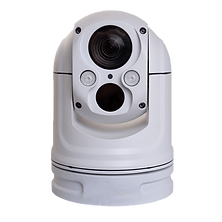
Industrial
Auxiliary Monitoring
The use of multi-sensor cameras as an industrial auxiliary monitoring tool offers improved coverage, increased data richness, and enhanced situational awareness. They provide a valuable resource for real-time monitoring, analysis, and decision-making in industrial environments.
How is a multi-sensor camera being used for industrial monitoring?
Here are some ways a multi-sensor camera can be used for industrial monitoring:
* Surveillance: Multi-sensor cameras can be deployed in industrial facilities to enhance security and surveillance. With multiple sensors, they can capture a wider field of view and provide overlapping coverage, minimizing blind spots. This helps in monitoring critical areas, detecting intrusions, and preventing unauthorized access.
* Process monitoring: In manufacturing or industrial processes, multi-sensor cameras can be used to monitor various stages of production. By capturing different perspectives simultaneously, these cameras can provide a comprehensive view of the entire process, helping identify issues, bottlenecks, or quality control problems.
* Environmental monitoring: Industrial facilities often require monitoring environmental conditions such as temperature, humidity, or air quality. Multi-sensor cameras equipped with environmental sensors can capture visual data along with environmental measurements. This integrated approach allows for better analysis and correlation between visual data and environmental parameters.
* Equipment monitoring: Monitoring the health and performance of machinery and equipment is crucial in industrial settings. Multi-sensor cameras can be installed near critical equipment to capture visual data and detect anomalies, such as excessive vibrations, leaks, or overheating. This enables proactive maintenance and minimizes downtime.
* Safety monitoring: Workplace safety is a top priority in industrial environments. Multi-sensor cameras can be utilized to monitor safety compliance, detect hazardous situations, and ensure the well-being of workers. They can capture video footage that can be reviewed to identify potential safety risks and provide evidence in case of accidents or incidents.
* Quality control: Multi-sensor cameras can assist in quality control processes by capturing detailed visual data. They can be used to inspect products, identify defects or inconsistencies, and ensure compliance with quality standards. The multiple sensors enable a more thorough examination from different angles, enhancing the accuracy of inspections.






.png)

